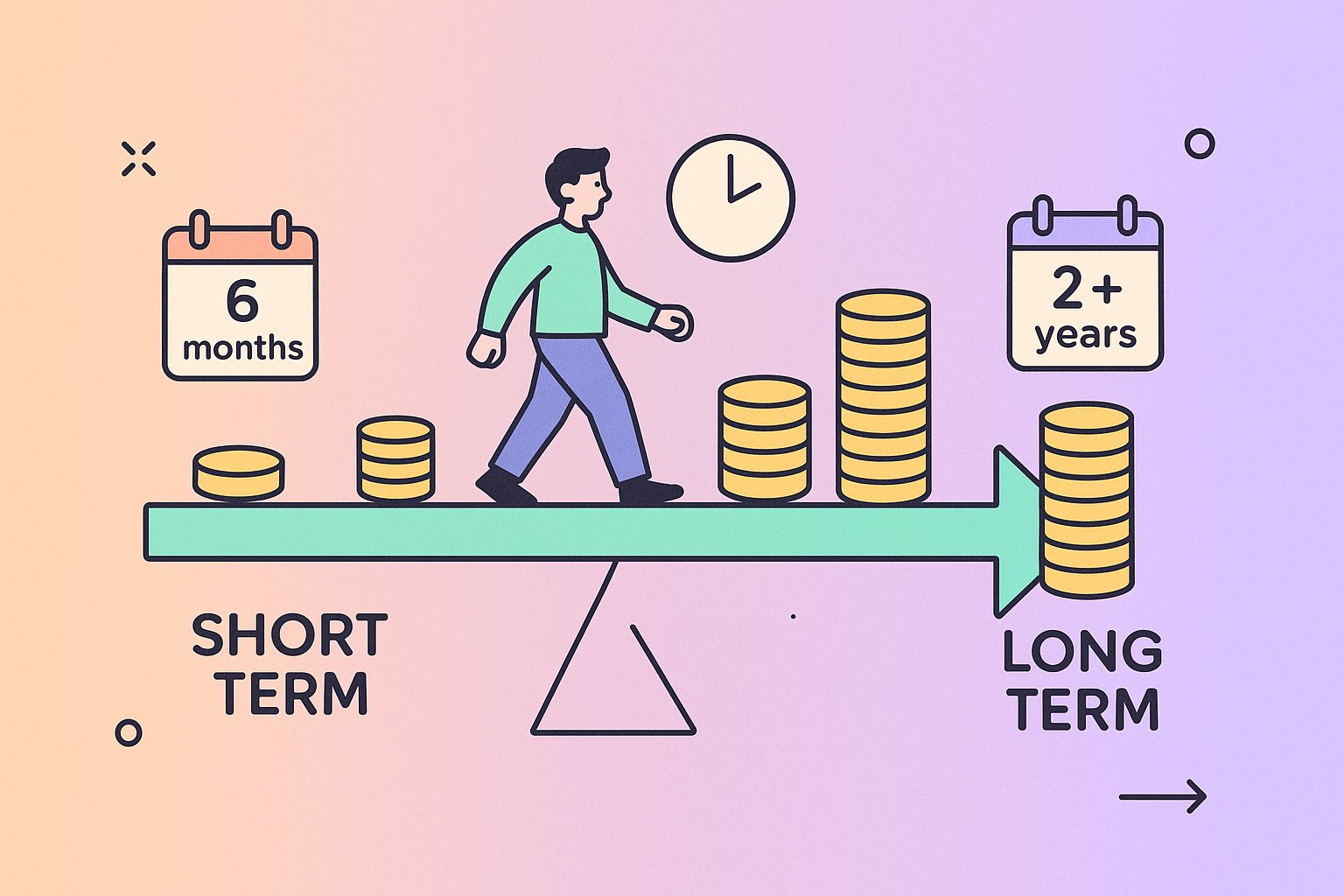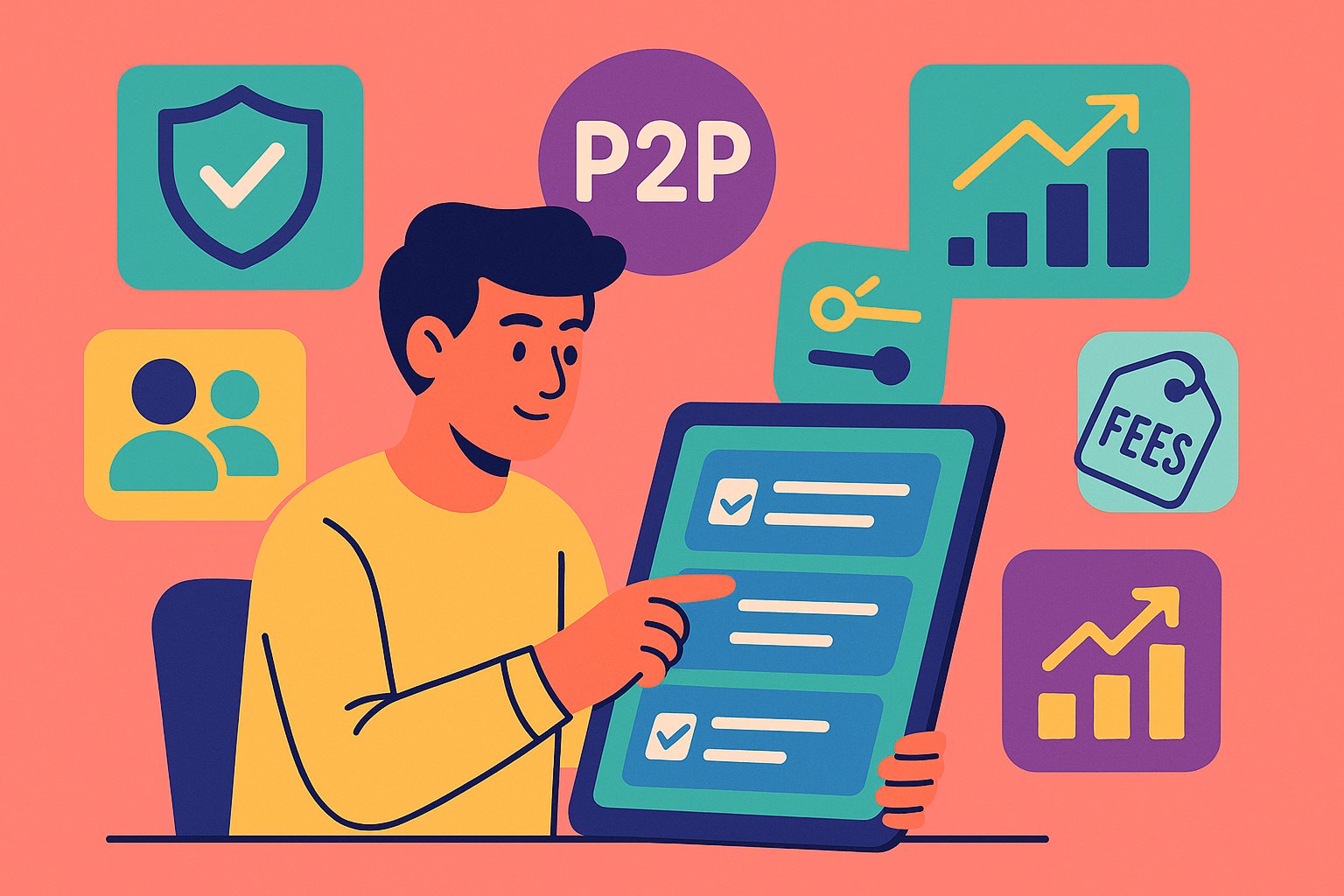A Fresh Wave of FinTech: The P2P Lending Boom
Peer-to-peer (P2P) lending has redefined the way borrowers and investors connect, bypassing traditional banks and creating an online marketplace for financing. As this disruptive model gains momentum, one question looms large for both sides of the transaction: how are interest rates set? Unlike conventional bank loans—where rates often hinge on broad lending guidelines—P2P platforms harness a blend of borrower data, platform economics, and investor behavior to determine pricing. For borrowers, navigating this landscape means understanding the intricate balance of credit assessments, risk models, and market demand. For investors, grasping the rate-setting process is equally vital to optimizing returns and managing default exposure. In this article, we’ll peel back the curtain on the factors that drive interest rates on P2P lending platforms, equipping you with the knowledge to make smarter borrowing and investing decisions in this dynamic financial ecosystem.
Under the Hood: The Core Principles of Rate Determination
At the heart of P2P lending lies a series of core principles that shape how platforms price loans. First, each borrower undergoes a rigorous underwriting process—often powered by proprietary algorithms—that evaluates credit history, income stability, and debt-to-income ratios. Next, the platform assesses the pool of available investor capital, gauging appetite for various risk grades and loan term profiles. Finally, macroeconomic forces—such as prevailing benchmark rates and overall liquidity in financial markets—establish a foundational cost of capital. By melding borrower risk metrics, investor demand, and broader economic conditions, P2P platforms arrive at a dynamic interest rate that reflects the true cost of borrowing. This approach contrasts with static bank formulas by adjusting pricing in real time, responding to shifts in creditworthiness and market sentiment. For participants, recognizing these guiding principles clarifies why interest rates can change overnight and why borrower actions—like improving a credit score—can translate directly into lower borrowing costs.
Borrower Profiling: How Creditworthiness Determines Pricing
Central to interest rate determination is the concept of borrower profiling. Every P2P platform constructs a unique risk score or credit grade for applicants by analyzing traditional factors—FICO score, length of credit history, number of open accounts—as well as alternative data points like bank transaction patterns and cash flow stability. A borrower with an A-grade rating—indicative of spotless credit, steady income, and low existing debt—will likely receive a lower APR, perhaps in the single-digit range. Conversely, an applicant with a B- or C-grade profile—reflecting moderate credit inquiries or uneven payment histories—may face mid- to high-single-digit rates. At the extreme end of the spectrum, D- or E-grade borrowers often pay into double-digit territory to compensate investors for elevated default risk. Platforms frequently publish historical default rates aligned with each credit grade, providing transparency for both borrowers and lenders. For borrowers, understanding the weight assigned to each profile factor—such as debt-to-income ratio or recent delinquencies—can highlight concrete steps (like paying down credit card balances) to improve their standing and secure more favorable rates.
Algorithmic Underwriting: The Role of Data and Technology
While traditional lenders rely heavily on manual credit reviews, P2P platforms lean on algorithmic underwriting to process hundreds of thousands of loan requests at scale. Sophisticated machine learning models sift through terabytes of data—automatically verifying employment information, scanning bank statements for income signals, and comparing credit histories against peer cohorts. Algorithms can adjust weighting in real time; for instance, if economic indicators suggest higher default risks in a particular industry, underwriting models may tighten criteria for borrowers in that sector, nudging rates higher to offset potential losses. Additionally, platforms may supplement conventional credit reports with alternative data sources—such as utility payments or social media signals—to deepen borrower insights. The outcome is a more granular view of credit risk, enabling platforms to offer nuanced APR brackets rather than one-size-fits-all tiers. For investors, this technological edge promotes precise risk-based pricing, while borrowers stand to benefit from a quicker, more transparent application process that flags issues before final rate assignment.
Investor Demand and Capital Flows: Market-Driven Pricing
P2P lending thrives on the supply of capital from individual and institutional investors. When investor appetite surges—driven by attractive yields or positive economic forecasts—platforms can afford to lower interest rates for borrowers because ample funding exists at each credit grade. Conversely, during periods of market uncertainty or heightened risk aversion, investor demand shrinks, compelling platforms to push up APRs across the board to attract scarce capital. For example, if a platform’s loan listings flood the marketplace and bids outpace supply, borrowers at the margin can secure more competitive rates. However, if macro volatility spooks investors and they withdraw capital, platforms may raise rates to restore equilibrium. Some P2P marketplaces even employ live bidding mechanisms, where lenders commit funds at varying yields until the loan target is fully subscribed. Such auction-style dynamics can further refine pricing, as investor competition compresses yields and benefits creditworthy borrowers. Grasping how investor sentiment and capital flows interact helps borrowers and lenders anticipate rate movements and adjust strategies—be it delaying a loan request until market conditions improve or pivoting investment focus to higher-grade credits during turbulence.
Macro Trends: How Economic Forces Shift P2P Rates
Beyond borrower-specific factors and investor behavior, broader economic forces weigh heavily on P2P interest rates. Benchmarks such as the federal funds rate, LIBOR, or SOFR often serve as reference points for platforms to calibrate base rates. When central banks signal rate hikes to combat inflation, P2P platforms typically pass through those increases to borrowers, especially in variable-rate loan products or where underlying funding costs rise for institutional backers. During economic expansions—characterized by low unemployment and rising consumer confidence—default probabilities tend to shrink, allowing platforms to lower spreads and offer more attractive fixed-rate products. Conversely, recessions or credit crunch events may see spikes in interest rates as lenders anticipate higher delinquencies. External shocks—be they geopolitical tensions or sudden stock market downturns—can trigger immediate shifts in P2P pricing, underscoring the importance for borrowers and investors to monitor economic calendars. By contextualizing P2P rates within the larger macroeconomic narrative, marketplace participants can time their loan requests or capital deployments more judiciously, optimizing costs and returns.
Platform Fees and Profit Margins: Adding to the APR
Interest rates published on P2P sites often embed key platform fees or origination charges that ultimately affect a borrower’s net cost and an investor’s net yield. For instance, a platform might display a borrower APR of 11.5 percent but deduct a 1.5 percent origination fee before disbursal, leaving the borrower with effectively 10 percent net proceeds. Similarly, investors may see a 10 percent interest rate on their notes, but a 1 percent servicing fee can reduce their net yield to 9 percent. Transparent platforms clearly itemize these fees during the application and investment processes, but some marketplaces hide them within opaque “effective rate” calculations. As a borrower, always examine a detailed amortization schedule to confirm how fees alter the true cost of borrowing. As an investor, review the platform’s servicing agreement to understand how administrative, collection, and technology maintenance fees will diminish your returns. Ignoring these embedded costs can lead to misaligned expectations, so thorough scrutiny of fee disclosures is paramount.
Credit Tiers and Risk-Based Pricing: Decoding Rate Charts
Most P2P platforms showcase a credit tier grid—a tabular representation linking borrower grades (A through G, for example) to interest rate bands. An A-grade borrower might land in the 6.99 to 7.99 percent range, while a D-grade applicant could occupy the 13.99 to 15.99 percent slot. These tiered structures simplify rate discovery for borrowers, offering immediate visibility into where they stand. However, the exact position within each band often depends on nuanced factors: length of credit history, recent late payments, or debt utilization ratios. At times, platforms offer sub-tier adjustments—like a D1 versus D2 classification—based on secondary criteria such as employment longevity or bank stability. Investors also rely on these tiers to assess prospective returns; a diversified portfolio might spread capital across B-, C-, and D-grade credits to balance yield and default risk. Understanding how credit tiers translate into specific APR outcomes, and what triggers movement between subgrades, arms borrowers with actionable paths to improve their standing—and helps investors fine-tune risk allocation strategies.
Transparency and Borrower Communication: Building Trust
Ultimately, a P2P platform’s credibility hinges on how transparently it communicates rate-setting mechanics to borrowers and investors alike. The most reputable marketplaces publish comprehensive whitepapers or periodic performance reports detailing historical loss rates, average yield by credit grade, and default timelines. Borrowers benefit from clear explanations of how underwriting models weigh factors like income stability or past defaults, unveiling the path to a better credit grade. Investors appreciate platforms that disclose the time-weighted average interest rates offered over recent months, as well as how residual capital is deployed when loan supply lags demand. When platforms proactively share scenario analyses—illustrating how a 100-basis-point shift in benchmark rates may ripple through portfolio yields—users can make more confident, data-driven decisions. Well-crafted borrower loan agreements and investor servicing guides demystify complex rate calculations, demonstrating that transparency is not just a regulatory checkbox but a strategic cornerstone for long-term platform success.
Empowering Your Decisions with Rate Insight
Interest rate determination on peer-to-peer lending platforms represents a vibrant interplay of borrower profiles, algorithmic underwriting, investor appetite, and macroeconomic currents. By mastering these interconnected factors—credit score assessments, risk-based pricing, market-driven yield fluctuations, and platform fee structures—borrowers can pursue financing at optimal times, while investors can calibrate portfolios to harness changing market conditions. In an industry defined by rapid innovation and fierce competition, platforms that emphasize transparent rate-setting processes and robust market analytics stand out, cultivating trust and loyalty among users. Whether you’re an aspirational borrower seeking a smooth path to credit or a seasoned investor hunting for attractive risk-adjusted returns, understanding the inner workings of P2P interest rates equips you to navigate this dynamic landscape with confidence and foresight.




